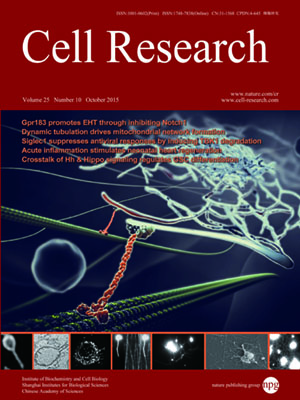
Volume 25, No 10, Oct 2015
ISSN: 1001-0602
EISSN: 1748-7838 2018
impact factor 17.848*
(Clarivate Analytics, 2019)
Volume 25 Issue 10, October 2015: 1171-1174 | Open Access
LETTERS TO THE EDITOR
Bromodeoxyuridine promotes full-chemical induction of mouse pluripotent stem cells
Yuan Long1, Min Wang1, Haifeng Gu1 and Xin Xie1
1CAS Key Laboratory of Receptor Research, the National Center for Drug Screening, Shanghai Institute of Materia Medica, Chinese Academy of Sciences, Shanghai 201203, China
Correspondence: Xin Xie, Tel: 86-21-50801313 ex 156(xxie@simm.ac.cn)
Direct reprogramming of somatic cells into induced pluripotent stem cells (iPSCs) with transcription factors (e.g., Oct4 (O), Sox2 (S), Klf4 (K), and c-Myc (M)) greatly expands our understanding of cell fate control. iPSCs resemble embryonic stem cells (ESCs) but without immune rejection and ethic issues, and are therefore considered as a promising source for cell replacement therapy. Patient-derived iPSCs can also be differentiated into disease-associated cell types and be used for drug screening1. However, iPSC applications are hindered by safety concerns about the possible genetic alterations caused by the use of exogenous pluripotency-associated factors. Many efforts have been taken to make iPSCs more amendable in clinical applications by using non-integrating gene delivery approaches2, or cell membrane-permeable proteins3,4 to induce the reprogramming.
10.1038/cr.2015.96
FULL TEXT | PDF
Browse 2369


